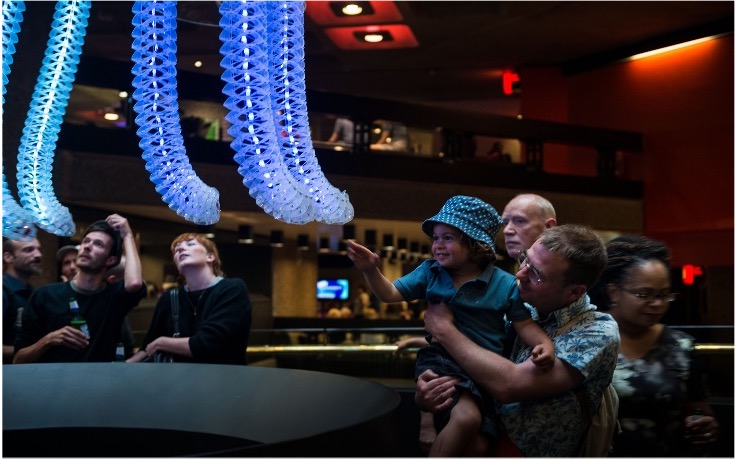Seminar Blogs
“Entangled Movement” – Naomi Tidball
For the final Transmission in Motion Seminar, participants embarked on a knowledge-transforming seminar on the transmission of dance mobility technology. The Seminar presenters, Suzan Tunca (ICK Amsterdam Dance Company) and Laura Karreman (Utrecht University) offer the seminar attendees insight into their focus of researching the development of digital applications and their role in dance/motion choreography. In addition, Tunca and Karreman discuss the connection and role of such applications concerning media’s presence and performance and how certain media can inform dance. In turn, Tunca and Karreman’s seminar presentation evaluates how various media forms archive and mobility.
From my academic experiences, I understood digital technologies’ influences on mobility via a film studies perspective. Primarily, the ties between motion and technology from the silent cinema era and concerning the genre of Musicals. In addition, however, and rather obvious, the evolution of digital technologies suffuses various areas of our lives.
For the remainder of this blog, I focus on the specific case study: Minimaforms’s “Petting Zoo” exhibition at the Barbican Centre, London (2013). What I find captivating about “Petting Zoo” is how the technology captures and connects with human bodies; how we can perceive this point of connection as a dance. This art installation consists of AI robotics which interacts and reacts to human engagement. The AI/Robotic pets utilize a real-time camera tracking system to locate/detect a gesture, or an activity presented to them. As a result, the pets learn and explore different behaviors and interactions with both the exhibition visitors and other pets (Minimaforms 2021). At first glance, the robots resemble the shape of a jellyfish—however, the responsive AI installation moves based on their perception of a human’s reaction. For instance, the tube-like structure will bend, move, change colors based on your movement, sound, and touch. Moreover, their reaction seems to mimic how we perceive different animal emotions, and these encounters, captured by Minimaforms’s installation, resemble a dance of knowledge-making between the reciprocated engagement of AI Robotic Pets and Human.

Minimaforms. 2021. “Petting Zoo.” 2013: Minimaforms. February 21. https://minimaforms.com/project/petting-zoo.
I connect my thoughts on “Petting Zoo” with Laura Karreman’s PhD dissertation, “The Motion Capture Imaginary > Digital Renderings of Dance Knowledge” (2017). More specifically, I draw a connection between “Petting Zoo” and Karreman’s methodological approach based on W.J.T Mitchell’s definition of media taxonomy (2017, 5). Karreman assesses that the term, media taxonomy—and by inserting a term like taxonomy:
“An organic view of media does not focus on media’s inanimate properties, but rather draws attention to their ability to appeal to our senses through animation, through the re-creation of life-like movement. The advantage of such a view is that it stresses that media do not exist in a technological realm separate from social and cultural practices, but that they are in fact deeply entangled in these practices and grow and develop in tandem with them.” (2017, 6)
In correlation with Karreman’s analysis of the term media taxonomy, Minimaforms’s “Petting Zoo” explores artificial intelligence functionality. However, it also poignantly addresses the possibility to co-exist or evolve within an environment. As Karreman suggests in the quote above, media taxonomy, as a term| methodological approach| viewpoint does not separate the technology from the social and cultural environments we presume to singularly occupy. Instead, both Karreman’s assessment and “Petting Zoo” illustrate how technology| artificial intelligence| media enmesh within our lives through an emotional and physical engagement, and they go beyond the notion of production-tool.
References:
- Karreman, Laura. 2017. “The Motion Capture Imaginary: Digital Renderings of Dance Knowledge.” PhD dissertation, Ghent University.
- Minimaforms. 2021. “Petting Zoo.” 2013: Minimaforms. February 21. https://minimaforms.com/project/petting-zoo.

